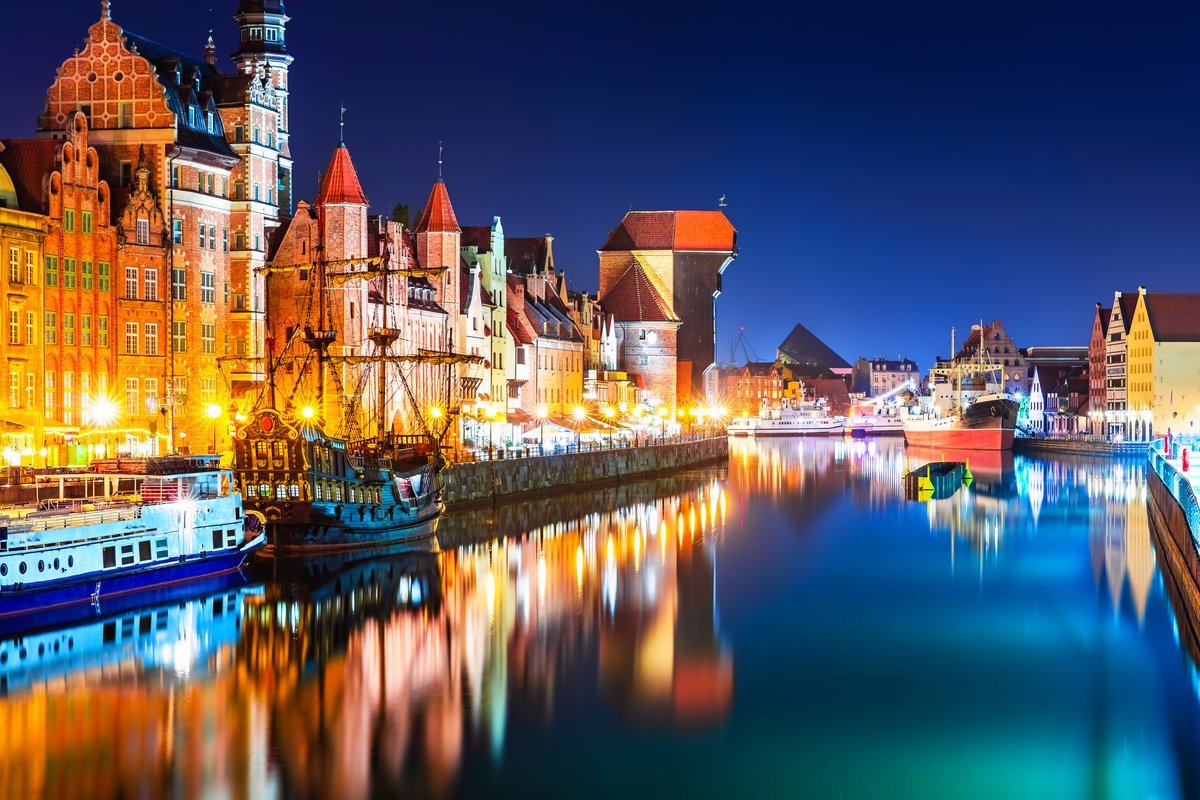Gdansk, a vibrant port city nestled on the Baltic Sea coast of Poland, is a captivating blend of history, culture, and modern dynamism. Renowned for its pivotal role in the Solidarity movement, Gdańsk has evolved into a major tourist destination, attracting visitors with its stunning architecture, rich maritime heritage, and a lively atmosphere.
A Glimpse into History
Gdańsk’s history stretches back centuries, with evidence of human settlement dating back to the Neolithic era. Its strategic location at the mouth of the Vistula River has made it a significant trading hub throughout history.
Medieval Roots: The city’s origins can be traced back to the 10th century, when it was a small fishing village. Over time, it grew into a prosperous Hanseatic League member, enjoying a period of significant economic and cultural growth.
Polish-Prussian Contention: Gdańsk’s history is intertwined with a complex relationship between Poland and Prussia. It was a part of Poland for centuries, but Prussian influence grew, culminating in its incorporation into Prussia in the 18th century.
World War II and the Solidarity Movement: The city suffered immense destruction during World War II. However, it rose from the ashes, becoming the birthplace of the Solidarity movement in 1980. Led by Lech Wałęsa, Solidarity played a crucial role in the fall of communism in Poland and across Eastern Europe.
Exploring Gdańsk’s Charms
Gdańsk offers a wealth of attractions for visitors:
The Historic Center: A UNESCO World Heritage Site, the Main Town (Główne Miasto) is a masterpiece of Gothic and Renaissance architecture. The vibrant Long Market (Długi Targ) is lined with colorful tenement houses, while the majestic Main Town Hall (Ratusz Głównego Miasta) dominates the square.
St. Mary’s Church: This magnificent brick church, one of the largest in the world, boasts stunning Gothic architecture and a unique astronomical clock.
The Crane (Żuraw): A medieval port crane, offering panoramic views of the city and the harbor.
Westerplatte: A historic peninsula where the first shots of World War II were fired, now a poignant memorial site.
The European Solidarity Centre: A modern museum dedicated to the history of the Solidarity movement, offering interactive exhibits and multimedia presentations.
Cultural Tapestry
Amber Trade: Gdańsk has long been a center for the amber trade. The city boasts numerous amber shops, showcasing the beautiful jewelry and art created from this fossilized resin.
Maritime Heritage: Gdańsk’s maritime history is deeply ingrained in its identity. The city’s shipyards played a crucial role in Poland’s shipbuilding industry, and the Maritime Museum offers a fascinating glimpse into the city’s seafaring past.
A Hub of Learning: Gdańsk is home to the University of Gdańsk, a renowned institution of higher education that contributes significantly to the city’s intellectual and cultural life.

Experiencing Gdańsk
Culinary Delights: Indulge in Gdańsk’s culinary scene. Sample traditional Polish dishes like pierogi, bigos, and golonka (pork knuckle). Don’t miss the opportunity to savor fresh seafood at one of the many waterfront restaurants.
Beyond the Main Town: Explore the vibrant neighborhoods beyond the Main Town. Visit the Oliwa district, known for its magnificent Oliwa Cathedral, or wander through the trendy Wrzeszcz district with its lively cafes and shops.
Day Trips: Take day trips to nearby attractions. Explore the charming seaside resort of Sopot, visit the impressive Gdansk Shipyard, or delve into the history of the Solidarity movement at the Westerplatte peninsula.
Beyond the City Walls
The Tricity: Gdańsk forms part of the “Tri City” metropolitan area, along with the neighboring cities of Gdynia and Sopot. Gdynia is a modern port city with a vibrant waterfront, while Sopot is renowned for its beautiful beaches and the longest wooden pier in Europe.
Amber Coast: The Baltic Sea coast near Gdańsk is known for its stunning beaches and amber deposits.
Kashubian Region: Explore the picturesque countryside of the Kashubian region, known for its distinct culture, traditions, and dialect.
Gdańsk: A City of Culture and Events
Gdańsk is a vibrant cultural hub, hosting numerous festivals and events throughout the year:
St. Dominic’s Fair: One of the oldest and largest fairs in Europe, held annually in July and August.
Shakespeare Festival: A renowned international theater festival held each summer.
International Film Festival: Showcasing a diverse range of films from around the world.
Gdańsk Today
A Modern Metropolis: Gdańsk has evolved into a modern city with a thriving economy and a vibrant cultural scene. It boasts a well-developed infrastructure, including a modern airport and efficient public transportation.
A Tourist Magnet: Gdańsk attracts millions of visitors each year, drawn to its historical charm, cultural richness, and stunning coastal location.
A City of the Future: Gdańsk continues to evolve, embracing sustainable development and innovative projects while preserving its rich heritage.
Final Thoughts
Gdańsk is a captivating city that seamlessly blends historical charm with modern vibrancy. Its rich history, from its Hanseatic League prominence to its pivotal role in the Solidarity movement, leaves an indelible mark on its character.
Visitors can explore the beautifully preserved Main Town, marvel at St. Mary’s Church, and delve into the poignant history at the Westerplatte peninsula. Beyond the city walls, the Tricity region offers diverse experiences, from the modern port of Gdynia to the charming seaside resort of Sopot.
Gdańsk’s cultural tapestry is woven with maritime heritage, the amber trade, and a thriving arts scene. The city’s culinary delights, from traditional Polish dishes to fresh seafood, further enhance the visitor experience.
FAQs
How do I get to Gdańsk?
Gdańsk Lech Wałęsa Airport (GDN) is well-connected to major European cities, offering a convenient option for air travel. Poland has an efficient train network, providing comfortable and scenic journeys to Gdańsk from other major cities. Budget-conscious travelers can opt for affordable bus travel options from various locations within Poland and neighboring countries.
How do I get around Gdańsk?
The historic center is easily walkable, allowing you to explore at your own pace. Gdańsk boasts an efficient public transportation system, including trams, buses, and the SKM suburban railway, providing affordable and convenient travel options. Taxis are readily available, although using licensed and metered taxis is recommended. Bike rentals offer a fun and active way to explore the city, with many locations offering bike rental services.
What are some local delicacies to try in Gdańsk?
Gdańsk offers a variety of culinary delights. Pierogi, Polish dumplings with various savory or sweet fillings, are a must-try. Bigos, a hearty stew made with sauerkraut, meat, and vegetables, is a flavorful and satisfying dish. Golonka, roasted pork knuckle, is a classic Polish dish, perfect for a hearty meal. Gdańsk’s coastal location offers fresh seafood options, including smoked fish, herring, and other Baltic Sea delicacies. Don’t miss the opportunity to sample local amber beer at one of the many breweries or pubs.
To read more, Click Here




Leave a Reply